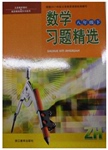题目内容
In ____ world, where computers rule our work and life online searches have became ____ necessity.
A、a; a B、a; the C、the; a D、the; /
A

练习册系列答案
 习题精选系列答案
习题精选系列答案
相关题目
We are now living in _____ world where the Internet rules our life, so online searches have become _____ must.
|
A.the, / |
B./ , a |
C.a , a |
D.a, the |